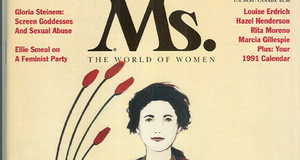The Development of Modern Feminist Thought: A Summary
By
2016, Vol. 8 No. 02 | pg. 2/2 | « ConclusionThus, we have seen the variations of the salient ideas and concepts that make up Feminism. There are marked differences between Mary Wollstonecraft and Simone de Beauvoir. If both were to have a discussion, there would be lots to disagree upon. But we must keep in mind the historicity of each of these feminists; they are all writing in their specific contexts. In all cases, it is the achievements of the former that make the latter different. Though, newer problems arose with newer solutions. As the Anarchist Emma Goldman points out, even emancipation can be oppressive. None of them, in fact, take up the finer nuances of patriarchal institutions; especially in the Third World, which are markedly different from that of the First.36 There is little universality amongst the feminist discourses discussed here, giving room to other forms of feminism, which may be problematic.37 There is even a rising opinion (especially in the global North) that we no longer need Feminism; that it has failed its goal. The ideological divisions within the feminist movement give more fuel to opinions of this sort.However, let us not be cynics out of compulsion. There is more that all of them agree upon than the contrary. Each feminist points out, in their own terms, the disadvantages that women experience in institutions that they are a part of–marriage, sex, love, family, workplace, law, education, politics and so on.38 Despite their differences, there is a larger truth that is accepted by all feminists–the truth of inequality. It is therefore, now that we must ask the basic questions again. It is now that we must question the basics again. It is now that we must ask the Leninist question of “What is to be done?” once again. It is now that we need Feminism, more than ever. Referencesde Beauvoir, Simone. The Second Sex (1952) pp. 672-705. In Alice S. Rossi (ed.) Feminist Papers: from Adams to de Beauvoir (1972, Northeastern University Press, Boston). Engels, Friedrich. The Origin of the Family (1884) pp. 480-495. In Alice S. Rossi (ed.) Feminist Papers: from Adams to de Beauvoir (1972, Northeastern University Press, Boston). Goldman, Emma. The Tragedy of Woman’s Emancipation (1906) pp. 508-516. In Alice S. Rossi (ed.) Feminist Papers: from Adams to de Beauvoir (1972, Northeastern University Press, Boston). Wollstonecraft, Mary. A Vindication of the Rights of Woman (1792) pp. 41-85. In Alice S. Rossi (ed.) Feminist Papers: from Adams to de Beauvoir (1972, Northeastern University Press, Boston). Endnotes1.) Rossi, Alice S. (Ed.) Feminist Papers: from Adams to de Beauvoir (1973, Northeastern University Press, Boston) 2.) Ibid. Introduction, p. 4 3.) “virtue” as found in the discourse of the philosophes, esp. Rousseau. The philosophes attribute virtue to men; Wollstonecraft extends it to women through this argument. 4.) Wollstonecraft, Mary ‘A Vindication of the Rights of Woman’ (1792) Rossi, Alice S. (Ed.) Feminist Papers: from Adams to de Beauvoir (1973, Northeastern University Press, Boston) p. 44 5.) Ibid. p. 43 6.) Ibid. p. 44 7.) Ibid. p. 47 8.) Ibid. p. 45 9.) Ibid. p. 48 10.) Soft language, susceptible heart, delicate sentiments and so on. 11.) Ibid. p. 42 12.) Ibid. p. 63 she develops that duties of both sexes are human duties and should be treated equally; neither should be given preference over the other. 13.) Engels, Friedrich ‘The Origin of the Family’ (1884) Rossi, Alice S. (Ed.) Feminist Papers: from Adams to de Beauvoir (1973, Northeastern University Press, Boston) p. 482 14.) Ibid. pp. 480-481 15.) Ibid. pp. 483-484. He adds to this by arguing that women were relegated household work, which in itself eventually lost its “public character,” thus becoming subordinate to the man’s occupation(s). This rendered the man as the bourgeois and the woman as the proletariat in the marriage, a most novel conceptualization of this relationship. 16.) Ibid. pp. 483-486 He does, however, point out that amongst the bourgeois-protestant nations, the upper classes do exercise choice, but only within their own class. Choice is completely absent in all Catholic nations. 17.) The notion of free and true choice is equated to sexual love, which is free from all obligations and inequality. Neither partner is supreme over the other in terms of reciprocation of love, economic status, socio-political identity etc. 18.) Ibid. p. 493 19.) Ibid. pp. 493-494. 20.) Not to forget his fellow companion Karl Marx. 21.) Goldman, Emma ‘The Tragedy of Woman’s Emancipation’ (1906) Rossi, Alice S. (Ed.) Feminist Papers: from Adams to de Beauvoir (1973, Northeastern University Press, Boston) pp. 511-513 22.) ibid. p. 509 23.) Ibid. p. 509, 24.) Ibid. p. 514 25.) If simplifying Hegel’s concept, this is an interesting Hegelian triad–a negation of negation. 26.) Ibid. pp. 511, 516 27.) De Beauvoir, Simone ‘The Second Sex’ (1952) Rossi, Alice S. (Ed.) Feminist Papers: from Adams to de Beauvoir (1973, Northeastern University Press, Boston) p. 672 28.) Ibid. pp. 676-678. Here, de Beauvoir gives both these terms their Hegelian weight. She argues that it is in this relationship that patriarchy laid in its true essence, as the One never truly formulates its own self without formulating the Other. However, women have been unsuccessful in giving up their role as the Other because they have been unable to resist sacrificing the benefits that this Otherness brings to them. 29.) Ibid. pp. 677-679. It is in this that she both equates and separates women from the proletariat. 30.) Ibid. pp. 681-686. De Beauvoir has developed this idea by citing various examples of Aristotle, Greek mythology, Roman Law, J.S. Mill, Jim Crow, the Laws of the USA, M. de Montherlant, Claude Mauriac and Christian Mythology. 31.) Ibid. p. 691. 32.) Ibid. pp. 697-699 33.) Here again, Simone de Beauvoir operates in the terminology of the Hegelian universe. 34.) Ibid. p. 701. It must also be noted at this point that she refutes those who claim that “women are already happy as they are” by deposing happiness as a positive emotion. She argues that it essentially is a sign of compliance, passivity and stagnation. 35.) Ibid. pp. 703-704 36.) It is in response to this absence that Dalit Feminism, Black Feminism; Third World Feminism et al came up roaring in the second half of the 20th century. 37.) The 21st century Third Feminist Wave has seen the rise of Liberal Feminism and New Age Feminism, which have a totally different discourse. These strands denounce structuralism and reduce feminism to individuals. They have relatively lesser solutions to offer, as pointed out by many critics, than their ancestors. 38.) Almost all feminists agree that these institutions are marked by inequality between the sexes; in a Hegelian way, they also perpetuate this inequality by acting as patriarchal agents. Perhaps a truly Hegelian solution would be to negate this negation by using these same institutions to counter patriarchy! Suggested Reading from Inquiries Journal
Inquiries Journal provides undergraduate and graduate students around the world a platform for the wide dissemination of academic work over a range of core disciplines. Representing the work of students from hundreds of institutions around the globe, Inquiries Journal's large database of academic articles is completely free. Learn more | Blog | Submit Latest in Women's & Gender Studies |
















